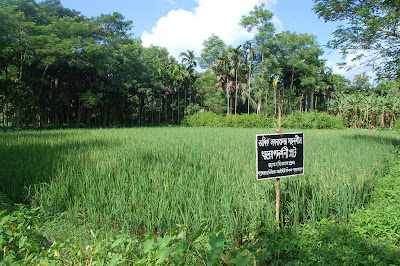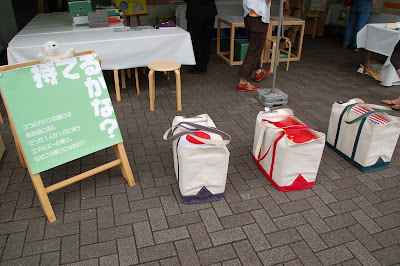NEW UNITED NATIONS IN-HOUSE CLIMATE CHANGE INITIATIVE
30 Jul 2008, UN Press Release
Seeking to lead by example in addressing climate change, United Nations Secretary-General Ban Ki-moon was launching a “Cool UN” initiative today to reduce energy consumption and the carbon footprint of United Nations Headquarters, Michael Adlerstein, Executive Director of the Capital Master Plan, said at a Headquarters press conference this morning.
Accompanied by Janos Pasztor, Director of the Secretary-General’s Climate Change Support Team, Mr. Adlerstein said the campaign would reduce the use of air conditioning, cut greenhouse gas emissions and save money. During a month-long trial period in August, the thermostats would be turned up from 72° F (22.2° C) to 77° F (25° C) in most parts of the Secretariat building and from 70° F (21.1° C) to 75° F (23.9° C) in the conference rooms, Mr. Adlerstein said. Accompanied by a relaxed “business casual” dress code, the campaign would also involve shutting down the buildings’ heating, ventilation and air conditioning systems over the weekends.
Mr. Adlerstein, the official in charge of the Organization’s massive renovations, said that, in launching the campaign, the Secretary-General had said: “We have succeeded in moving climate change to the top of the international agenda for action, and this means that the UN must take action itself. We must lead by example, and if we are to ask others to take action, we must do so as well.”
The initiative would save some 4.4 billion pounds of steam during the month of August, or the equivalent of 300 tons of carbon dioxide in terms of greenhouse gas emissions, he said. That equalled an approximate 10 per cent reduction in energy consumption. It would also produce cash savings estimated at $100,000. If successful, the test would be extended.
In the winter months, the process would be reversed, with a 5° F reduction in the thermostat settings, he said, estimating that winter energy savings would be somewhat larger than the summer reduction, lowering energy costs by about $1 million for the year. The environmental benefit of the campaign, on a year-round basis, would result in the reduction of emissions by some 2,800 tons of carbon dioxide. The initiative would also encourage staff to explore other innovative ideas for making the United Nations a model in the global fight against climate change.
Mr. Pasztor said that, as negotiations moved forward in preparation for Copenhagen at the end of next year, climate change issues were increasingly visible on the international political agenda. “Clearly, we must act, and the Secretary-General is doing everything he can to mobilize action and, indeed, unprecedented action to move forward on climate change.” People must reflect on how they live and work, and the Secretary-General was seeking to raise awareness and find solutions. He was also engaged in bringing together a coherent response to climate change by the United Nations system. The “Cool UN” initiative was part of his “leadership by example” approach.
Responding to several questions about the technical issues involved, Mr. Adlerstein said the present cooling system at Headquarters was “antique”, but he felt comfortable that it was possible to raise the temperature by 5°F throughout the compound. “We’ll do our best and we’ll adjust as the next couple of weeks progress.” As for varying temperatures in different parts of the complex, there were many issues involved in old buildings like the United Nations Headquarters. “So we are doing what we can for the next year as we move into the Capital Master Plan.” The changes would not solve the building’s “illnesses”, but they would reduce its carbon footprint.
Asked about greening measures within the Capital Master Plan framework, he said he was not yet ready to announce all of them, but steps would be taken to incorporate significant energy savings into the Plan. In fact, it would be possible to exceed the 40 per cent reduction in energy and 30 per cent reduction in water consumption that had been discussed last winter. Among other things, there was a plan to introduce wind generation in the compound for demonstration purposes. Water retention measures for landscaping and other non-potable uses had also been considered. The Capital Master Plan Office would be reporting to the General Assembly on the whole variety of measures later in the year.
In response to another question, he said that, while the current heating and cooling system ran on steam, changes under the Capital Master Plan envisioned a hybrid use of steam and electric power, which would allow the United Nations to lower its energy consumption.
Source:
http://www.un.org/News/briefings/docs/2008/080730_CMP.doc.htm














 This restuarant in Dhaka is using the Eco light bulb. The restuarant keep the box of the light as it has a year of warranty. He will be able to exchange for new light buld if it fail during the first year.
This restuarant in Dhaka is using the Eco light bulb. The restuarant keep the box of the light as it has a year of warranty. He will be able to exchange for new light buld if it fail during the first year.




























